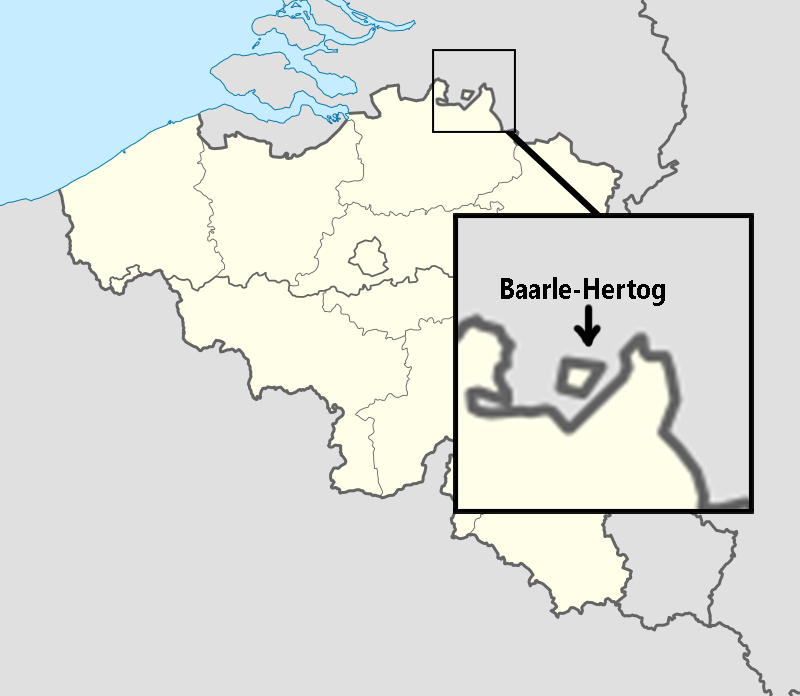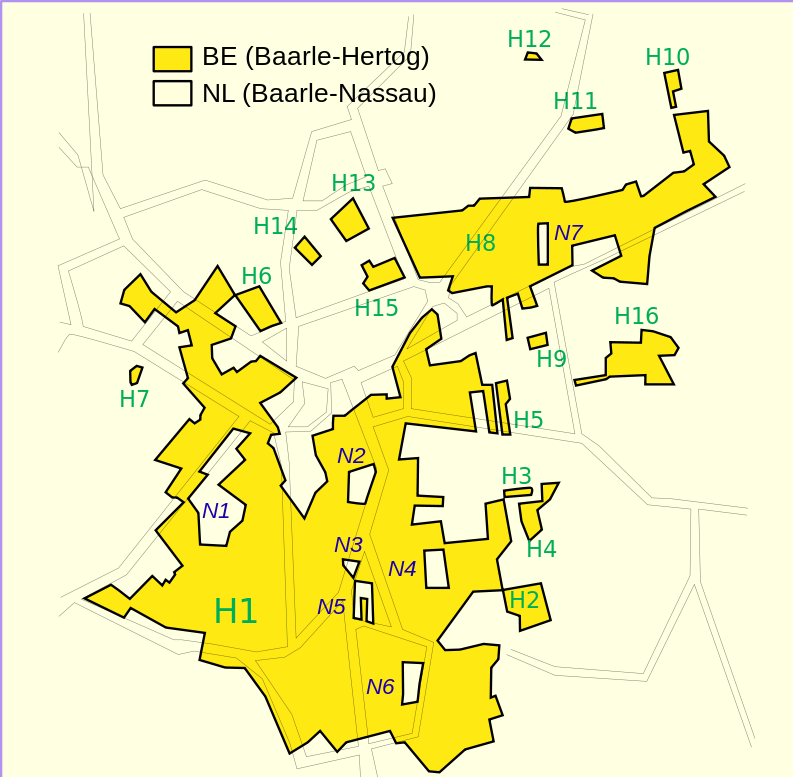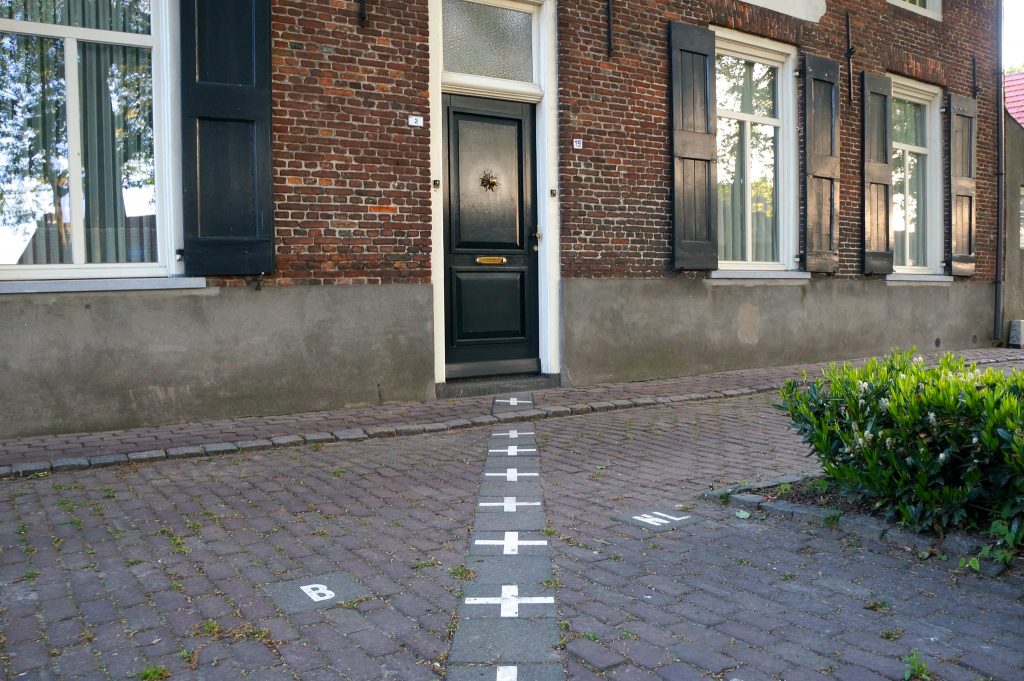Baarle – One of the strangest municipalities on Earth Posted by Sten on Jul 8, 2019 in Culture, Dutch Language, Dutch Vocabulary
If you dare to look closely at the map of Belgium, you find something weird: There is a little small bit in the north of the country that is surrounded by Dutch land, with no territory connecting it to Belgium! And it gets even more complicated… How did this exclave (or, enclave for the Netherlands) come about? Does it matter? Let’s talk about it.
For other posts in the series Strange Places in the Netherlands, click here.
Baarle-Hertog
This exclave is a gemeente (municipality) in the provincie (province) of Antwerpen (Antwerp). It is surrounded by the Dutch gemeente Baarle-Nassau. However, Baarle-Hertog is not even just one coherent piece that just happens to be outside of Belgium – it consists of 22 exclaves. Yes. 22! And, as you can see on the map above, Baarle-Hertog also houses exclaves from the Dutch Baarle-Nassau – 7 in total. And all of that on an oppervlakte (area) of just about 80 square kilometers (about 30 square miles) with fewer than 10,000 inwoners (inhabitants). This is all super confusing!
With country borders like that, you can imagine that it is just a mess. Country borders pass through houses, which therefore need both a Belgian and a Dutch address. There are two bus lines, two police stations, two mayors. Though there are ways now that the gemeentes work together. For example, the Belgian and Dutch police work together, where they surveil together in one bus.
For the people living there, the proximity of another country is actually very handy. Discount supermarkets are cheaper in The Netherlands. Beer can be drunk from 16 years of age in Belgium, but only from 18 in The Netherlands. Guess where the youth goes to drink!
It goes further however. It also matters where you park, or where you park without a ticket. The fees are much higher in the Netherlands than in Belgium. So go find yourself a Belgian parkeerplaats (parking spot)!
But how did this strange border come about?
A centuries-old border
In the 1200s, Hertog (Duke) Hendrik I of Brabant lent parts of Baarle to the Heer (Lord) of Breda. Breda was part of the later Dutch territory, Brabant was part of later Belgian territory. Not a big deal, really. Back then, it just meant that the lord ruling over you is a different guy. But then the Vrede van Munster (Peace of Munster, the Peace of Westphalia) came in 1648. This created the idea of soevereiniteit (sovereignty) of a state. And suddenly it mattered a whole lot more in which country you lived! Your nationality, rights, taxes, you get the idea.
There have been efforts to change the border and to align it more easily. But too no avail. The bureaucratic procedures were slow, and people got used to the weird borders.
And so now there is a border that crosses and cuts straight through houses. People cross the border dozens of times every single day. People are fine with this border the way it is. And it is a great way to get visitors to the small town!
What do you think about this border? Quaint or problematic? Would you like to live in a place like this? Let me know in the comments below!

Build vocabulary, practice pronunciation, and more with Transparent Language Online. Available anytime, anywhere, on any device.






